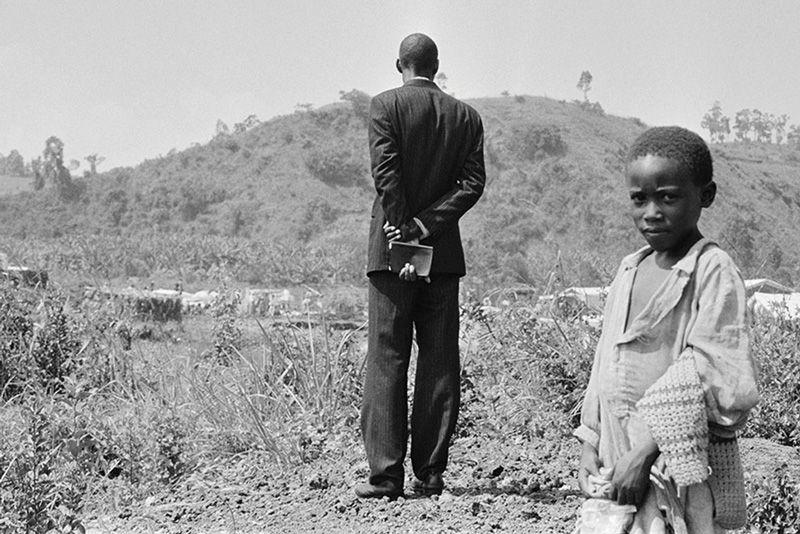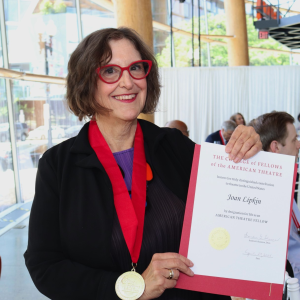Photographs document ‘Strength and Compassion’ of human spirit
Published December 3, 2014
“Even in times of great hardship, people with strength and compassion can live with great courage.”
This deceptively simple statement by Eric Greitens, 40, whose images are on display in the exhibition “Strength and Compassion” at the International Photography Hall of Fame (IPHF), is found at the core of his volunteer and artistic contributions.
A Navy SEAL, international humanitarian volunteer and photographer, Greitens documented Rwandans in refugee camps during the genocide in that country, Bolivian children living on the streets, and victims of the Bosnian War, among many other tragedies.
Jason Gray, 34, director of facilities and exhibitions at the IPHF, worked with co-curator Robert Bullivant and Greitens to select images from Greitens’ 2008 book “Strength and Compassion: Photographs and Essays.”
“The exhibition follows themes in the book of courage, faith and resilience and is arranged by country and region,” said Gray, a married father of one. “There is a balance of images between resolved crises, such as the Bosnian War, and ongoing crises like poverty in Bolivia.”
The title “Strength and Compassion” comes from Greitens’ experience as an aid worker.
“You must have both courage and compassion to effect change,” he explained. “Without courage, compassion falters. Courage makes compassion meaningful in the world. And compassion provides direction for courage.”
Greitens volunteered for humanitarian causes for about 10 years in the 1990s, before he became a SEAL. He started photographing people in crisis during this time; all images in the show date from 1994 to 1998.
Married with one son and a resident of St. Louis, Greitens grew up in the city and attended B’nai El. The Holocaust profoundly affected him as a child.
“When I met Holocaust survivors, everyone said never again, no more ethnic cleansing, but Bosnia and Rwanda happened anyway,” he said. “I had a strong sense that the world should respond to these crises.”
Greitens joined the military and became a SEAL to enable him to protect refugees and one day prevent genocide.
Photography first interested him in college when he took a documentary photography class.
“After I did some documentary work in Bosnia, Americans were interested in my photos,” he said. “If they connected to one person in a photo, this personalized what was happening in a larger context. I wanted to inspire people to get involved and make a difference.”
One image with which many viewers connect is “Pastor and Boy (at Refugee Camp, Rwanda),” which is on the cover of Greitens’ book. He photographed the boy and pastor, survivors of the genocide, standing with their backs to each other. In the foreground, the boy looks at the camera, while behind him the pastor faces away.
“The boy demonstrates a tremendous amount of strength in his gaze,” Greitens said.
The IPHF’s Gray also was drawn to “Pastor and Boy.”
“You contemplate what the pastor thinks about, with his back turned as he ponders the landscape and the tragedy,” Gray said. “The boy anchors the photo with his strong gaze. … Rwanda now has a good ecotourism industry and one of the best economies in Africa. Rwandans are extremely resilient people.”
Gray’s favorite piece is “Barbed Wire Football Game, Bolivia,” in which a group of kids play soccer in the background behind a barbed-wire fence in sharp focus. The photograph comments not only on the horrors of poverty but also on the children’s hardiness. They find ways to enjoy life even in dark circumstances.
“I like subtle pieces because they reward a closer look,” Gray said. “There are levels of intimacy that shock you.”
Sometimes even the hardiest children cannot defeat the odds against them. Greitens doesn’t shy away from these depictions. One of the most difficult images to view is “Child of the Street in Casket, Bolivia.”
A boy in a white shirt with a black cross necklace lies in a white coffin with a glass cover. He was homeless because his poverty-stricken parents couldn’t take care of him.
“These children choose to leave home or are forced out, and must grow up fast,” Gray explained.
The horror of this photograph reverberates not only because this child passed away, but because viewers can’t help but contemplate his arduous, brief life.
When children do survive, they become resilient. Their remarkable nature even affects their adult caregivers.
“People who fared the best in refugee camps were parents and grandparents who needed to be strong for kids,” Greitens said. “Those who volunteered at a kindergarten at a camp in Bosnia also did well. Taking care of kids gives adults a sense of purpose during hardship.”
Gray and Greitens acknowledge that the show presents the darkest and yet most hopeful aspects of humanity.
“Humans have a remarkable well to draw from, in terms of overcoming challenges and obstacles,” Gray said.
Greitens added, “My photos help everyone see that they can act with kindness even in the most difficult circumstances. The images are brutal and beau of Greitens’ book. He photographed the boy and pastor, survivors of the genocide, standing with their backs to each other. In the foreground, the boy looks at the camera, while behind him the pastor faces away.
“The boy demonstrates a tremendous amount of strength in his gaze,” Greitens said.
The IPHF’s Gray also was drawn to “Pastor and Boy.”
“You contemplate what the pastor thinks about, with his back turned as he ponders the landscape and the tragedy,” Gray said. “The boy anchors the photo with his strong gaze. … Rwanda now has a good ecotourism industry and one of the best economies in Africa. Rwandans are extremely resilient people.”
Gray’s favorite piece is “Barbed Wire Football Game, Bolivia,” in which a group of kids play soccer in the background behind a barbed-wire fence in sharp focus. The photograph comments not only on the horrors of poverty but also on the children’s hardiness. They find ways to enjoy life even in dark circumstances.
“I like subtle pieces because they reward a closer look,” Gray said. “There are levels of intimacy that shock you.”
Sometimes even the hardiest children cannot defeat the odds against them. Greitens doesn’t shy away from these depictions. One of the most difficult images to view is “Child of the Street in Casket, Bolivia.”
A boy in a white shirt with a black cross necklace lies in a white coffin with a glass cover. He was homeless because his poverty-stricken parents couldn’t take care of him.
“These children choose to leave home or are forced out, and must grow up fast,” Gray explained.
The horror of this photograph reverberates not only because this child passed away, but because viewers can’t help but contemplate his arduous, brief life.
When children do survive, they become resilient. Their remarkable nature even affects their adult caregivers.
“People who fared the best in refugee camps were parents and grandparents who needed to be strong for kids,” Greitens said. “Those who volunteered at a kindergarten at a camp in Bosnia also did well. Taking care of kids gives adults a sense of purpose during hardship.”
Gray and Greitens acknowledge that the show presents the darkest and yet most hopeful aspects of humanity.
“Humans have a remarkable well to draw from, in terms of overcoming challenges and obstacles,” Gray said.
Greitens added, “My photos help everyone see that they can act with kindness even in the most difficult circumstances. The images are brutal and beautiful at the same time. I hope viewers leave the show with compassion and commit to courage in their own way.”
‘Strength and Compassion’
When:11 a.m.- 5 p.m. Wednesday – Sunday through Jan. 25; closed Mondays and Tuesdays
Where: The International Photography Hall of Fame, 3514 Olive Street near Grand Center
How much: $5 for adults, $3 for students with ID and seniors, free for children under age 18 and IPHF members. All admissions are free on the first Friday of each month
More info: Call 314-535-1999 or visit iphf.org















